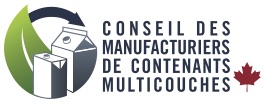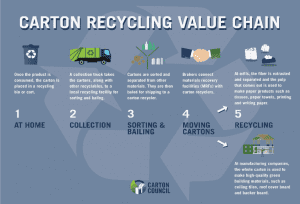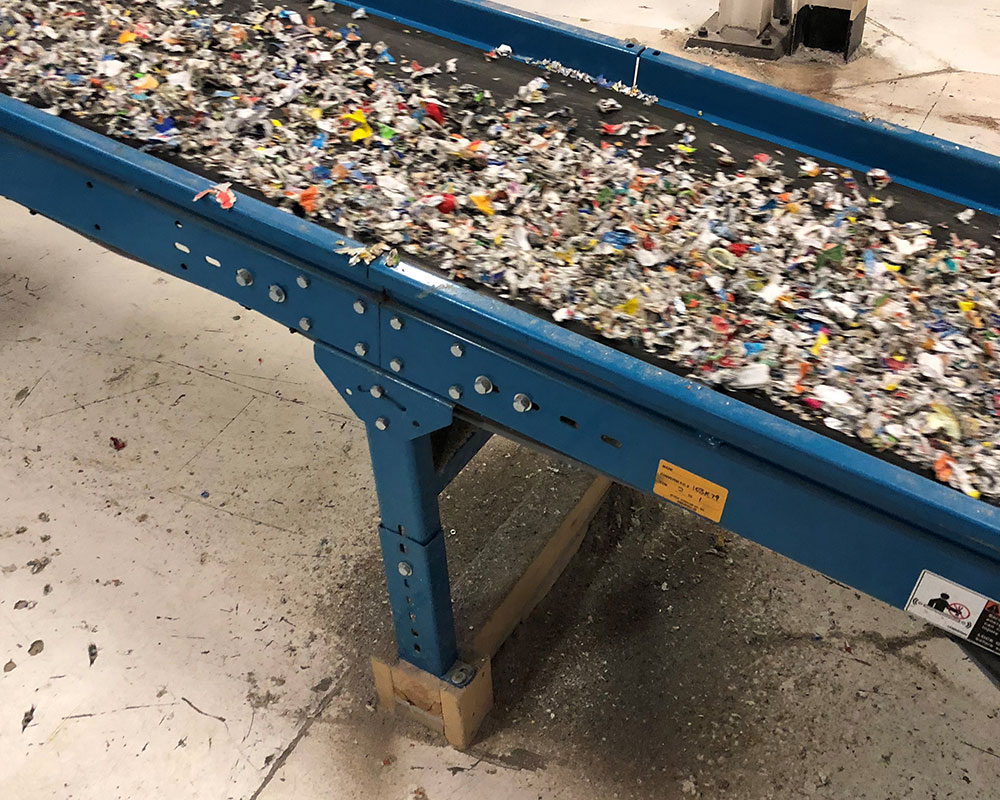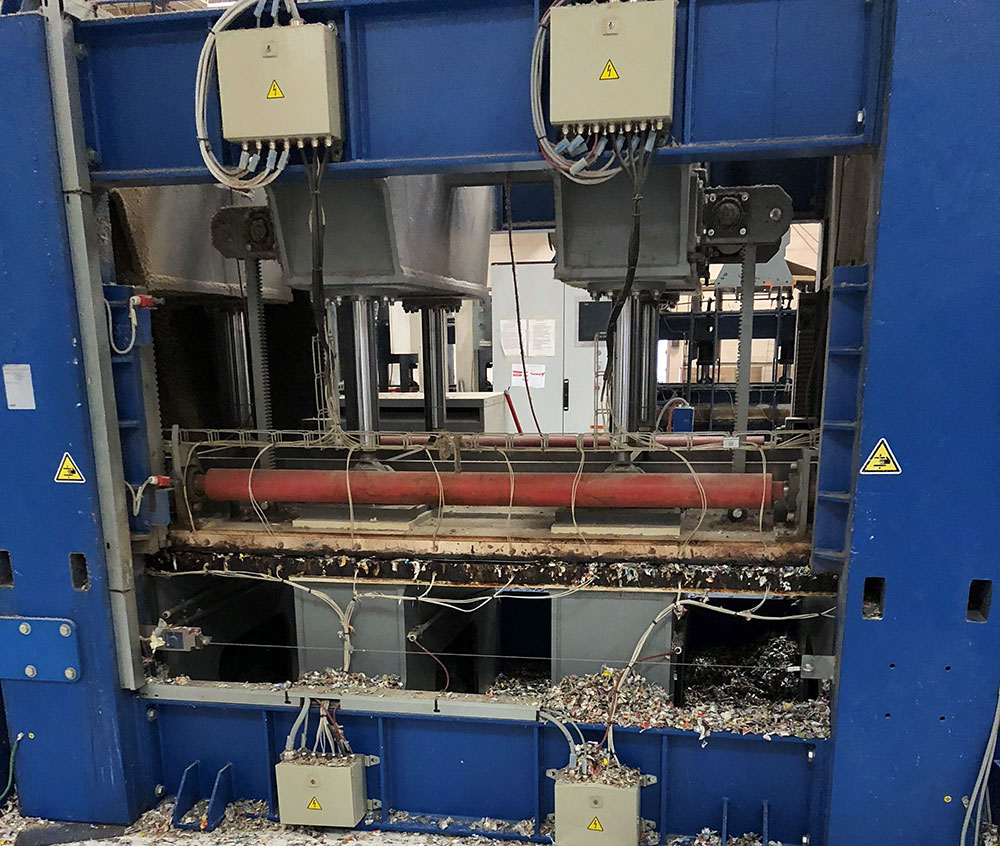How Are Cartons Recycled
The carton recycling value chain is similar to that of other recyclables. In jurisdictions where cartons are collected via a residential collection programs, cartons are collected along with other recyclable materials. They are transported to a Materials Recovery Facility (MRF) where they are sorted and baled. From there, they are sent to a paper mill or to a facility that manufactures sustainable building materials.
In jurisdiction where cartons are collected via a deposit return system, cartons are typically hand-sorted at the depot, and then sent off to be recycled through either of the two paths described below.
Watch our video, How Recycled Cartons Become New Products, that explains both paths to recycling.
Path 1: Consumer products
Cartons are packed together and sent to a paper mill. At the paper mill, cartons are added to a large machine called a Hydrapulper – essentially a giant blender – that uses water to break the cartons down into their component parts. Cartons are separated into paper, plastic and aluminum. The pulp is used to make paper products such as paper towels, tissue and office paper. The residual plastic and aluminum can be sent on for further recycling, such as producing ceiling tiles or wallboard, or can be used for energy to fuel the paper mill.
Path 2: Building materials
Instead of a paper mill, cartons can also be sent to a recycling company that turns cartons into building materials. Cartons are shredded, then heat is applied and they are pressed back together into large sheets – Like a panini press made of shredded cartons!
About 30 cartons can be made into a single 2’x2’ ceiling tile, while roughly 400 cartons make up a full wallboard.
1a) Hydrapulper
Carton bales are put into the hydrapulper
1b) Fiber Slurry
Water is added to dilute the fiber slurry and remove non fibrous materials
1c) Finished Product
In some cases, the finished product is wet lap pulp, which becomes the input to new paper-based products, such as tissue, towelling, food packaging, and writing paper. In other cases, the mill itself produces one or more of those finished products.
2a) Shredding
Cartons and caps are shredded
2b) Panini Press
Panini Press” – Shredded materials are sent through a machine that resembles a giant panini press
2c) Wall Board
To produce building materials such as this wallboard. (Photo credit: Kelly Green Products)








